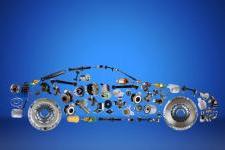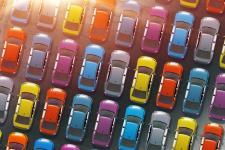The Government's 'Road to Zero' Strategy Has Been Revealed

After the shock announcement that new cars and vans that relied solely on petrol or diesel would be banned from 2040, the government has released their 'Road to Zero' strategy that outlines how this goal will be achieved.
On the way to reaching the 2040 goal the government would like to see at least 50% of new cars sold in the ultra low emissions category and 40% of vans. Within the strategy there are 3 key barriers to the zero emissions future identified and solutions offered...
1. Sufficient vehicle supply.
There will need to be enough electric vehicles available to satisfy consumer choice. Currently there are only 38 vehicles that would qualify as ultra low emission for the plug-in grant compared to hundreds of conventional cars in the market place.
There are several measures the government has taken to stimulate development in zero emissions technology which include;
- Increasing public investment into research and design of zero emissions vehicles to an eventually 2.4% of GDP by 2027.
- Honouring a previously made commitment of £246 million to the Faraday Battery Challenge to encourage the development, design and manufacture of world leading batteries.
View Our Green Vehicles Available to Lease Now
2. Creating a strong customer base.
Government figures show that 38% of customers who are looking to purchase a new car would consider a zero emissions vehicle, yet only 2% of new car sales end up being ultra low emissions. To achieve emissions goals, the government will continue to try and encourage ultra low emission vehicle choices, to do this they will;
- Continue current plug-in grants until 2020, customer incentives will continue beyond this date but there was no indication of in which form this will be.
- The road tax system for vans will be considered to encourage the lowest emissions choices at the point of purchase.
- The government will also be leading by example pledging to ensure 25% of the central government fleet is ultra low emissions by 2022 and all new car purchases are ultra low emissions by default with the aim that 100% of the central government car fleet will be ultra low emissions by 2030.
3. Ensuring a fit for purpose infrastructure network.
Range anxiety is a major barrier to zero emissions vehicles, although there are currently 14,000 charge points across the country many people still find themselves miles from a charge point. There are many ways the government is proposing to make charging up as easy as filling up;
- £400 million will be invested into the charging infrastructure to increase the rate at which charging points are being installed.
- Ensuring where appropriate all new homes will have a charge point available.
- The home charge grant support will continue until 2019 to reduce the cost of home installations.
- The grant available for the workplace charging scheme will be increased from £300 up to 75% of the total cost to a maximum of £500.
- Reviewing the residential charge point structure for those who have communal parking or do not own their own home.
- Investing £4.5 million into providing on street residential charge points.
- Supporting the research and development of low cost wireless and on street charging solutions with £40 million investment.
- To ensure the energy network will be able to cope with extra demand an Electric Vehicle Taskforce will bring together both the energy and automotive industry.
Read more: Rivervale's Guide to the New Nissan Leaf
While these measures are all about new vehicles, the government will also be continuing to encourage the retrofitting of fuel saving and emission reduction technologies as a lower cost alternative to a new vehicle that has a big impact. Retrofitting a selective catalytic reduction device can reduce tailpipe emissons by up to 80%.
What is clear is that more still needs to be done to reduce emissons. New cars are far more fuel efficient and emit fewer emissions than cars in the 1990's, but despite all the improvements transport greenhouse gas emissions have only fallen by 2%.





